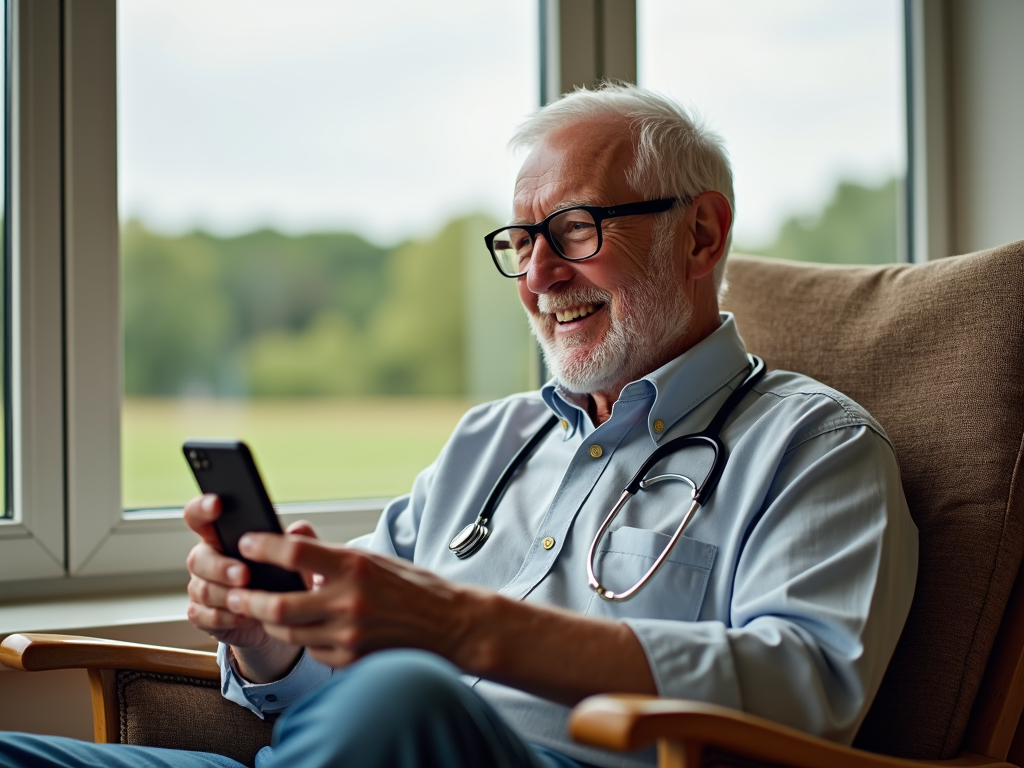Telemedicine is changing healthcare for the better, making it easier for people to see a doctor without leaving home. This article dives into how telemedicine improves access to care, boosts health equity, and supports community health and family wellness. From rural towns to busy cities, it’s a game changer.
What Is Telemedicine and Why It Matters
Telemedicine uses technology—like video calls and apps—to connect patients with healthcare providers remotely. It’s not just a trend; it’s a solution to real problems. For many, getting to a doctor means long drives, missed work, or tough schedules. Telemedicine flips that on its head, bringing care to you.
Think about it: no more sitting in traffic or waiting rooms. You can talk to a doctor from your couch. This is huge for people who’ve struggled with access to care—whether they live far from a clinic, can’t move around easily, or juggle too many responsibilities. It’s healthcare that fits your life.
How Telemedicine Improves Access to Care
Access to care means getting medical help when you need it, without big hurdles. Telemedicine makes this happen in ways traditional visits can’t. Here’s how:
- No Travel Needed: If you’re hours from a hospital, telemedicine saves the day. A quick video chat replaces a long trip.
- Flexible Timing: Got a packed schedule? You can see a doctor during a break or after hours.
- Specialist Access: Need an expert? Telemedicine connects you to specialists who might be hundreds of miles away.
I once met a farmer named Tom who lived two hours from the nearest clinic. When his knee started acting up, he dreaded the drive. With telemedicine, he got a diagnosis and treatment plan in one afternoon—right from his kitchen.

This isn’t just convenience—it’s life-changing. Telemedicine cuts out barriers that keep people from getting help. It’s especially helpful for busy parents, elderly folks, or anyone who can’t easily leave home. The impact of telemedicine on access to care is clear: it brings healthcare closer to everyone.
Telemedicine and Health Equity
Health equity is all about giving everyone a fair shot at good health. Sadly, not everyone gets that chance. Rural communities, low-income families, and people with disabilities often face bigger hurdles. Telemedicine steps in to level things out.
In remote areas, doctors can be scarce. Telemedicine brings them to your screen. For families pinching pennies, it cuts travel costs and lost wages. Plus, many platforms offer care in different languages, helping folks who don’t speak English feel included.
I heard about a woman named Aisha, a single mom in a small town. She couldn’t afford the gas to see a specialist for her migraines. Telemedicine linked her to a neurologist, and she finally got relief—no expensive trip required.

By reaching underserved groups, telemedicine promotes health equity. It’s not perfect—internet access is still a challenge for some—but it’s a big step toward making healthcare fairer for all.
Impact on Community Health
Community health is about keeping whole neighborhoods healthy, not just one person at a time. Telemedicine plays a big role here, too. It helps with prevention, chronic illness care, and education—all key to strong communities.
For people with conditions like diabetes or high blood pressure, regular check-ups matter. Telemedicine lets doctors track your health remotely, using tools like apps or wearable devices. This keeps folks out of the hospital and in their daily lives.
It’s also great for teaching people how to stay well. Health workers can host online classes about eating right or quitting smoking, reaching more people than an in-person event ever could.

In one rural county I read about, telemedicine cut hospital visits for heart patients by 20%. Nurses checked in virtually, tweaking meds as needed. That’s community health in action—keeping people well, together.
Benefits for Family Wellness
Families today are busy. Between work, school, and everything else, finding time for doctor visits is tough. Telemedicine makes family wellness simpler and less stressful.
Kids get sick—a lot. With telemedicine, parents can talk to a pediatrician without dragging everyone to the office. Same goes for older relatives who need regular care but can’t travel easily. It’s a weight off caregivers’ shoulders.
Mental health counts, too. Virtual therapy sessions are now common, letting teens or adults get help privately, at home. It’s a quiet way to keep the family strong.

I know a dad, Mike, whose daughter had anxiety. In-person therapy was a hassle with his job. Telemedicine let her see a counselor after school, and Mike says it’s been a game changer for their family’s peace of mind.
Real-World Numbers: Telemedicine’s Reach
Here’s a quick look at how telemedicine is making waves:
| Benefit | Impact |
|---|---|
| Rural Access | 70% of rural patients report easier care |
| Time Saved | Average 2 hours saved per visit |
| Cost Reduction | 30% lower costs for some families |
These stats show telemedicine isn’t just talk—it’s delivering results.

Challenges to Watch
Telemedicine isn’t flawless. Not everyone has fast internet or knows how to use the tech. Some worry about privacy, too. But as technology improves and more people get online, these hurdles are shrinking. The benefits outweigh the bumps for most.
Conclusion
The impact of telemedicine on access to care is huge. It’s opening doors for people who’ve been left out, strengthening communities, and helping families stay well. From Tom’s rural kitchen to Aisha’s living room, real stories prove it works.
Healthcare shouldn’t be hard to reach. Telemedicine makes it simpler, fairer, and closer to home. As it grows, expect even more lives touched by this digital shift.
Discuss Here